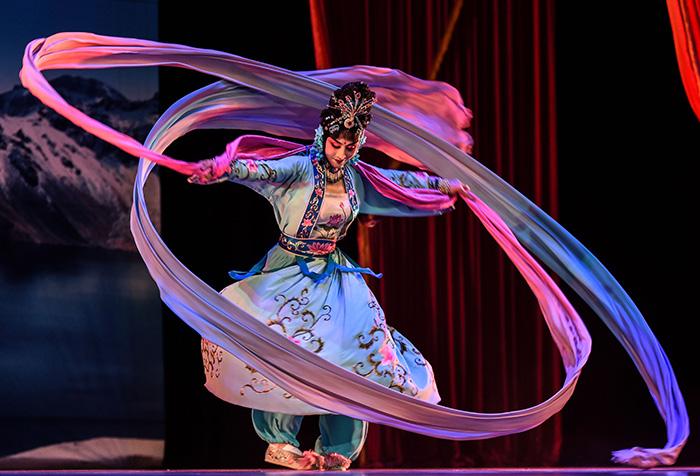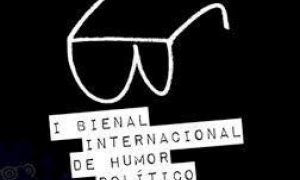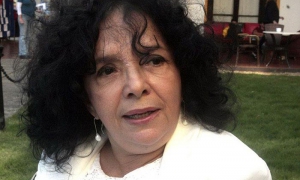
The mature fruit of knowledge / is not the one you stumble upon in another person’s garden, / but rather the one that blossoms from the struggles of your own journey. / Even though eventually you will realize the extent of your unknowingness.
The serenity, knowledge of life and tenacity of the Chinese people, which have always impressed Cubans, are expressed in these lines of the poem Yuan Pei Fu Says Farewell to his Disciple, by the Cuban poet Regino Pedroso (1896-1983).
With this text, and the entire book of which it is a part -The Plum Tree of Yuan Pei Fu (1955) - its author has reached one of the milestones of Cuban poetry of the 20th century, which shows the interest, admiration and influence of the Chinese heritage on the Island at that time; a process with historical and social roots that went back to the previous century and continue with equal force today.
Although silent, as is the nature of the Chinese, the traces of the customs and traditions of the Asian nation are undeniable in that great ajiaco that is Cuban culture. Transculturated, they have survived with unusual strength and, together with the indigenous, African and Spanish influence, they have contributed to the forging of the nationality.
THE LONG JOURNEY
There were just over 200 of them, almost all of them young, with an average age of 21, and very poor. They arrived in the port of Havana on June 3, 1847, on the brigantine Oquendo from what is now Guangdong province.
Despite the fact that Spain was looking for cheap labor, and that the contracts for those who worked in the sugar, tobacco and coffee plantations, mines and factories were so ruthless that they forced them into slavery for eight years or more, the arrival of the coolies did not stop, and Cuba became the first country in Latin America to receive a massive migratory flow from China.
Beginning in 1860, there was another wave of Chinese immigrants, this time from California, where they had come because of the "gold rush". They were fleeing racist attacks but enjoyed a better economic situation.
After slavery was abolished in Cuban territory in 1886, the Chinese took over agricultural work and small businesses such as inns, laundries and workshops.
The first decades after their arrival in Cuba were characterized not only by the ruthless exploitation that led to illness and a high suicide rate, but also by the courage with which they joined the cause of independence. Gonzalo de Quesada, a profound connoisseur of the wars, asserted: "There were no Chinese Cuban deserters. There were no Chinese Cuban traitors".
During the first half of the 20th century they continued to arrive in Cuba, and their population reached a considerable size. Havana's Chinatown -which still exists- became the most significant area of their settlement, and one of the most important in the world.
It is not by chance that the elements that have been most preserved in the culture of the country, after the hardships and struggles shared with the natives, are those associated with daily life.
ART AND ENIGMA
As Chinatown grew, so did cultural activities: traditional theater, opera, and festivals of all kinds.
According to the musicologist María Teresa Linares Savio, the first mention of Chinese theater dates back to 1873, and it was a wooden puppet theater. The second, two years later, called Sun Yen, introduced the Cantonese type of opera.
"The traditional Chinese opera allowed the introduction to Cuba of the elements of the millenary art of China through its dances, music and dramatic elements of novels, stories and ancient legends".
Not only did more Chinese businesses, theaters, cinemas and restaurants appear, but also radio stations that broadcast their music. The greatest strength was in the cities of Havana, Santiago de Cuba and Cienfuegos.
The Lion Dance, explains the specialist, which was first performed in public in 1930 during the Lunar Year celebrations, was included in Havana’s carnivals until 1950.
All this led to a natural integration of the Chinese into popular and academic art. For example, the Chinese cornet was added to the instrumental ensemble of Santiago's comparsas, and the Chinese woodblock was used as an instrument in popular folk music.
It also became a trend in carnivals to use the Chinese theme as a manifestation of the exotic. It appeared as a character in vernacular theater, and in the music of Ernesto Lecuona (Here comes the Chinaman) and Amadeo Roldán (Under the pagoda and Chinese bells), among others.
Visual arts have also been strongly influenced by the Chinese roots: it is worth mentioning just two of the most important artists for Cuba: Wifredo Lam and Flora Fong.
Yosvanis Fornaris, a Cuban archeologist and director of the National Museum of Decorative Arts in Havana, told the Xinhua news agency that the first evidence of direct commercial relations between Chinese and Cubans in the 19th century can be found in Chinese porcelain pieces, some of which were specifically commissioned by families of the highest Cuban aristocracy at the time.
This taste for Chinese aesthetics, taken to an artisanal level, would survive for many years in the homes of the country.
In literature, the trace is also noteworthy. In his book The Chinese Trace in Cuban Literature, Rogelio Rodríguez Coronel refers to texts such as Carmela, The Chinese Merchant and The Charcoal Burner, by Ramón Meza; The Chinamen, a short story by Alfonso Hernández Catá; The Chinaman, a play by Carlos Felipe; The Baldomero Case, by Virgilio Piñera; and Grab a Snake by the Tail, by Leonardo Padura. He also analyzes the work of Julián del Casal, José Lezama Lima and Severo Sarduy.
Margarita Mateo Palmer, in a review of the aforementioned volume, refers to the tradition in our literature -popularized by the radio series Chang Li Po by Félix B. Caignet, of 1936, and the first Cuban feature film with sound, The Red Serpent (1937) - of associating mystery, pursuit, the search for solutions to riddles with Chinese culture, linked to the patient and thrifty Asian detective.
SAVED BY A CHINESE DOCTOR
Culture, understood in its broadest sense, that is, in all those accumulations that go beyond the artistic and literary and that constitute and define a people, has a significant Chinese component in Cuba.
In our proverb, the phrase "not even a Chinese doctor can save him" has a historical basis. In the article The Influences and Traces of Chinese Culture in Cuba: 1847-1959, by Chunyi Lei, it is explained that the Chinese doctor who achieved the greatest fame on the Island was Cham Bom Biá, whose real name was Chang Pon Piang.
His skill, along with that of other Chinese who practiced traditional medicine, even in times of epidemics, with a profound knowledge of the flora of his country of origin and of Cuba, became popular in the popular imagination.
Medicines that could be purchased in Chinese pharmacies, such as the famous Chinese ointment or tiger balm, also became popular.
In the field of religion, the Chinese deity San Fan Con -in China, Guan Gon- penetrated the Cuban Santeria, associated with Changó, and syncretized with Santa Bárbara of the Catholic religion. Other symbols and beliefs that have spread to our days are "the Chinese horoscope, the cycles and the elements (fire, earth, metal, water and wood), together with its link to feng shui"; and the celebrations on the occasion of the Lunar New Year.
Charades, a game of chance practiced especially by the poor, and its numbers are still part of popular knowledge. Other amusements have become popular on the Island, such as mahjong and dominoes, the most popular board game here. As for sports, wushu was the first martial art practiced in Cuba.
Cuisine is perhaps one of the areas where the Chinese presence is strongest: from the love of rice, vegetables and roast pork, to sweet and sour sauces, soy sauce, Chinese butterflies and fried rice (created in San Francisco by Chinese immigrants).
Since China and Cuba established diplomatic relations on September 28, 1960, numerous cultural agreements have helped strengthen ties between the two nations.
Institutions such as the House of Chinese Arts and Traditions, the Confucius Institute and the Cuban School of Wushu contribute to a constant return to an ever-living source; just as Yuan Pei Fu asks his disciple:
Go, go now, my child. / Rise, thrive, imagine, reject, confirm, obliterate. / And once the fire subsides, neither belief nor faith affection, / Come back to the plum tree. // There I shall anticipate you, beneath its boughs, / In the lightless shelter of the never-ending path...






